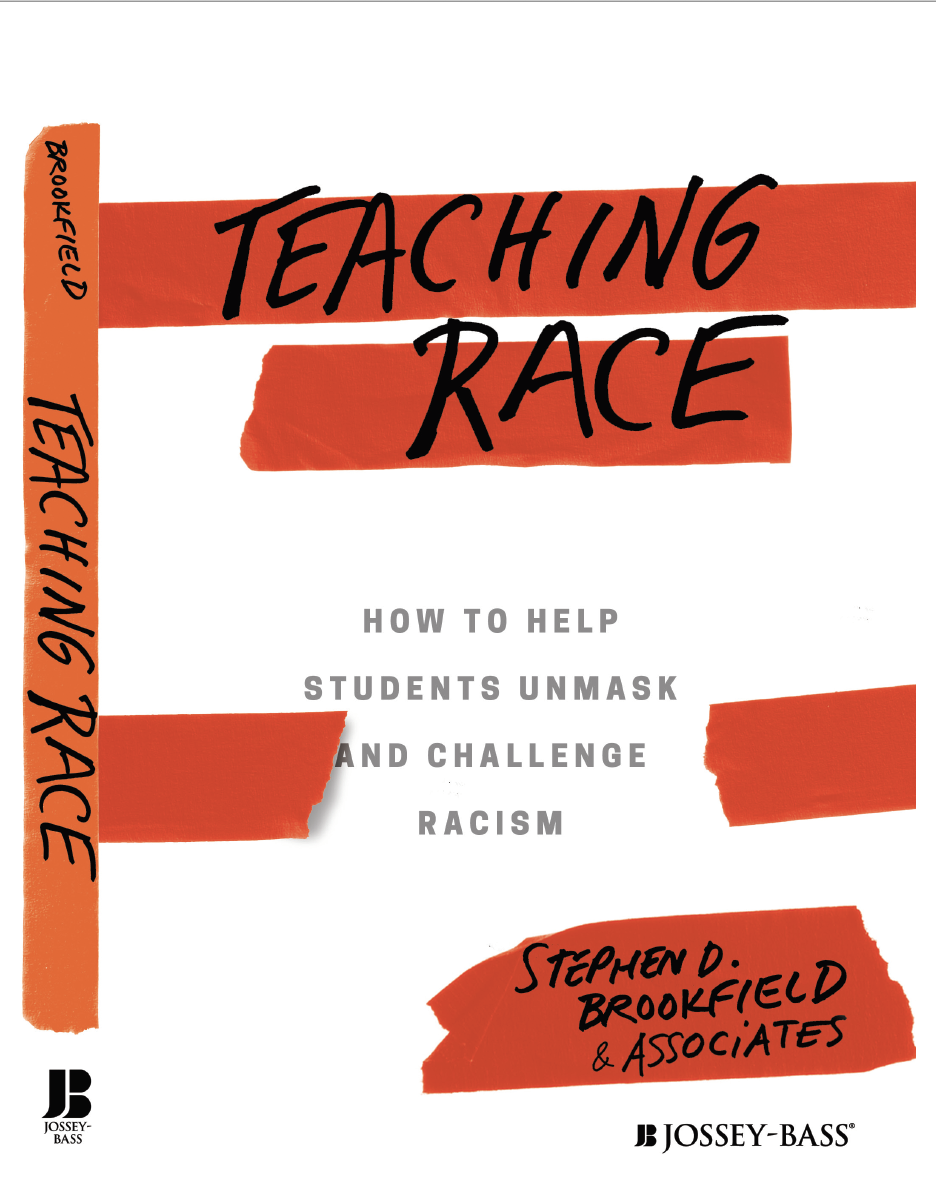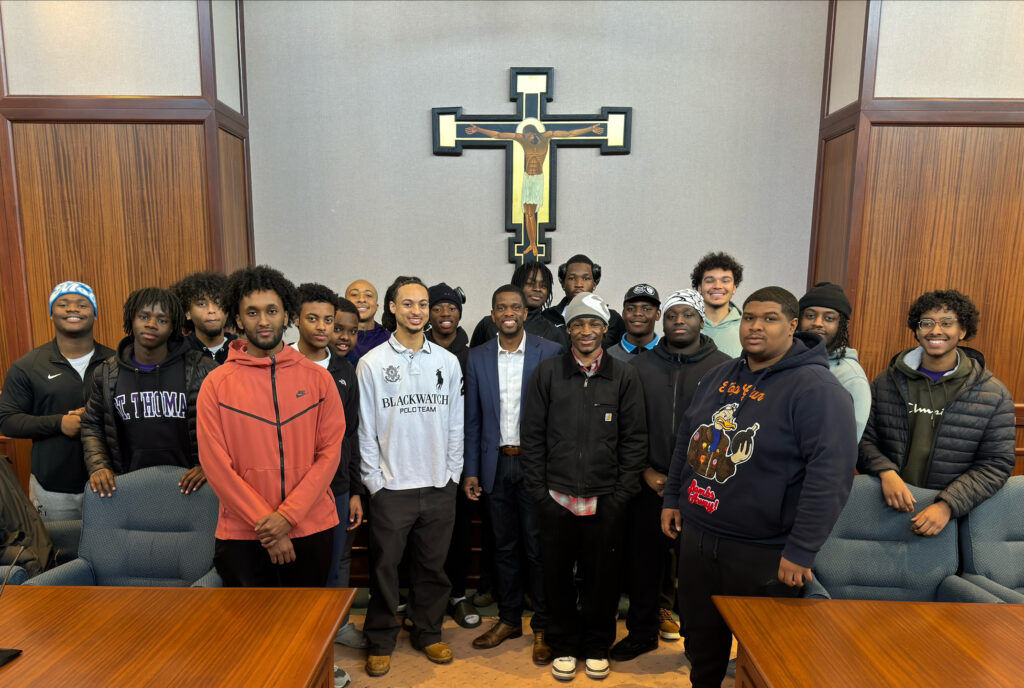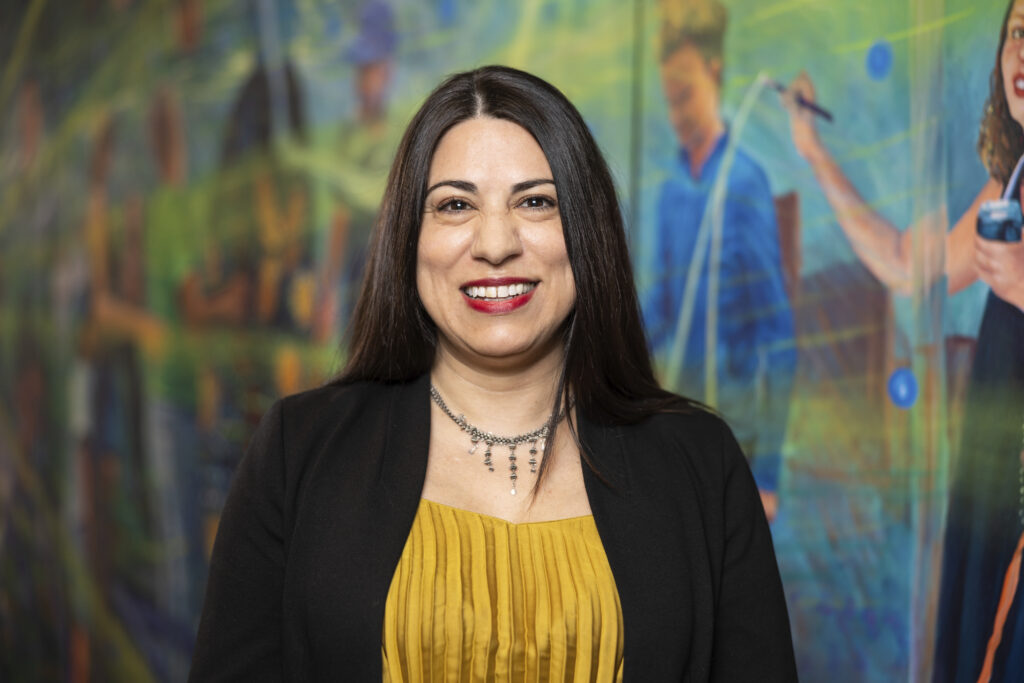This story was updated June 3, 2019. A previous version of this story incorrectly referred to the title of the John Ireland Chair as the John Ireland Endowed Chair.
Last spring John Ireland Chair Stephen D. Brookfield worked with several colleagues to write a book on how university faculty members can better teach and discuss racial issues in their classrooms. Brookfield and six of the book’s contributors - Consuelo E. Cavalieri, Bryana H. French, Mike Klein, Lucia Pawlowski, Salina M. Renninger and Buffy Smith - held a panel in the Al and Brenda Iversen Hearth Room on Nov. 28 to discuss how to implement the techniques included in the just-released book, Teaching Race: How to Help Students Unmask and Challenge Racism.

Buffy Smith, Stephen D. Brookfield, Consuelo E. Cavalieri, Bryana H. French and Salina M. Renninger (l-r) discuss teaching race.
Here are five observations from the panel.
1. We need to transform how race is discussed in all courses.
“Teaching race is something that happens in every pocket of this place (St. Thomas),” Brookfield stated. The idea that discussions about identity should be taking place in all classrooms, regardless of subject matter, was a recurring theme emphasized by several of the panelists.
“Some of the work that we do as an institution when it comes to racial issues tends to be reactive,” said Klein, associate professor in the Department of Justice and Peace Studies. Klein shared how assignments related to identity can be woven into coursework. “Then when something like this happens, we’re already on the path.”
2. Mistakes will be made along the way.
The opening chapter of Teaching Race includes a quote from panelist Pawlowski, founder and director of People’s Writing Center. It reads, “There are two ways to teach about race – badly, or not at all.” When working toward changing the way faculty discuss race in classrooms, mistakes are inevitable. “You [faculty] are going to make a mistake,” stated Smith, associate dean of academics in the Sociology and Criminal Justice Department. “The hope is that when I make a mistake, [students] correct me – please do, that’s the only way I will learn – but that we still have a relationship.”
“No one’s expecting perfection,” Klein added. “It’s such a liberation to say, ‘I’m going to make mistakes.’”
3. Silence in the classroom can have more than one meaning.
Too frequently when race is brought up in classroom discussions the topic is greeted with silence from students. However, understanding why students are silent can help faculty determine how to work through this silence. Smith reflected on her own experiences of examining why her students weren’t speaking up.
“I had to think about my interpretation of that silence. So, was it because they’re not engaged? Or was it because of their own kind of fear, or the tension that could be the reason for this silence? And how I answer that question will impact how I perceive them and how I respond.” Smith went on to say that when the cause of silence is fear and tension, “That’s something we can work with as a community, because their perceived lack of engagement is that they don’t want to say something that will be offensive.”
4. It’s OK to be vulnerable.
Cavalieri, associate professor in the Graduate School of Professional Psychology, said that in teaching and discussing racial issues in the classroom “there’s a lot of embodied emotion that happens really under the skin.” To have honest discussions, both students and faculty need to examine their own identities, which can lead to feeling vulnerable in these situations. However, this is all part of the process. “As educators that’s our job, to say we’re going to struggle together,” Smith said.
“It requires a fair amount of risk on my part,” said Renninger, director of training doctoral students in Graduate School of Professional Psychology. She went on to say she works to address topics “in a way that supports everyone in the room but also takes a stand, and that’s really delicate.”
French, associate professor in the Graduate School of Professional Psychology, added that, “Even though I feel prepared, I still make mistakes, and I think the other piece of it is recognizing who’s in the room, so as a professor trying to teach to multiple levels is always a challenge.”
5. Building a community is important.
Through classroom discussions about racial issues, students and faculty should be learning more about themselves and those around them. This in turn contributes to creating a community, allowing individuals to better understand one another. While disagreements will occur and mistakes will be made, these efforts work toward establishing a stronger community.
“We have a foundation. Can we build upon that foundation? Of course,” Smith said. “There has to be a level of trust that we’re going to engage in difficult conversations. We might not always understand where everyone’s coming from, but we give each other enough patience, grace, mercy and forgiveness in the process to say, ‘Let’s continue to have this conversation.’”







